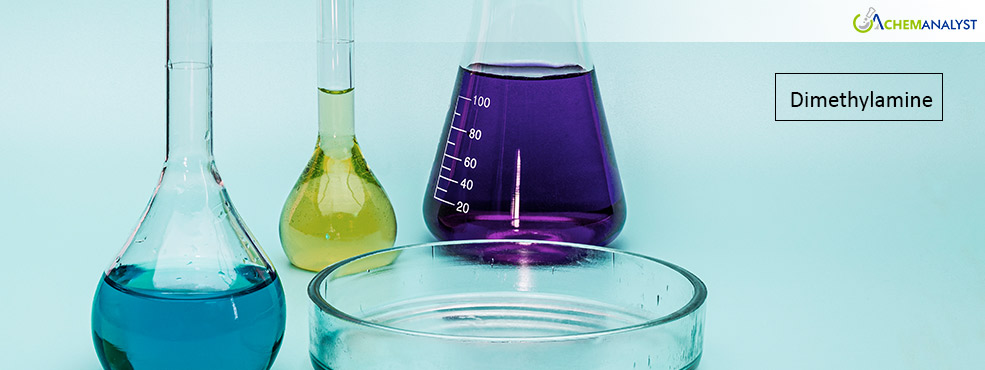Asian DMA Prices Surge Amid Tight Inventories and Robust Downstream Demand
- 27-Jan-2025 7:15 PM
- Journalist: Stella Fernandes
In the Asian market, Dimethylamine (DMA) prices witnessed a sharp surge by mid-January, driven primarily by dwindling inventory levels among market participants, which disrupted the demand-supply equilibrium. This imbalance caused a significant rise in DMA prices in the respective period. The absence of feedstock volatility ensured limited cost pressure from upstream markets.
Additionally, improved DMA manufacturing activities and robust performance in downstream markets such as agrochemicals and pharmaceuticals contributed to the upward momentum. Strong demand from key end-use industries, including agriculture and industrial applications, further intensified the market pressure, solidifying the price surge across the region. This surge in DMA pricing reflects market dynamics shaped by tightening supply, healthy downstream demand, and steady feedstock support.
In the Indian market, DMA prices rose by 6.8% over the past two weeks of January, driven by increased demand from the downstream market and a global inventory deficit that disrupted the supply chain. This supply-demand imbalance contributed to the observed price surge. From the feedstock perspective, Methanol prices rose by 15.3% in December, followed by a marginal decline of 1.2% in the past two weeks, while Aqueous Ammonia prices showed a 1.0% decrease in December and a modest 0.5% increase recently. These fluctuations provided mixed cost support for DMA manufacturers. In the downstream agrochemical sector, domestic companies are projected to achieve high single-digit volume growth, albeit lower than previous expectations. This slower growth is attributed to factors such as pest-free crops, favorable climatic conditions in certain regions, a delayed season by 15 days, and high sales returns from the Kharif crop. From the manufacturers front, Despite lower volumes in the prior quarter, the outlook remains optimistic, suggesting potential demand growth in the coming months. This combination of robust demand, tight inventories, and feedstock fluctuations significantly influenced DMA pricing in India.
In the Chinese market, DMA prices experienced a significant rise by mid-January, primarily driven by depleting inventory levels among market participants and a global improvement in demand dynamics, which bolstered DMA consumption. The uptick in both domestic and international market demand further strained supply chain management, creating a supply deficit and contributing to the price surge during this period.
Contrastingly, feedstock price trends had minimal impact on the pricing dynamics. Ammonia prices continued to show a downward trend, while Methanol prices remained stable, providing limited cost pressure for DMA producers. The combination of tightened supply, heightened demand, and stable feedstock costs collectively influenced the sharp increase in DMA prices.
According to ChemAnalyst's anticipation, DMA prices are expected to trend bullish in the upcoming sessions. This projected increase in the DMA price is primarily attributed to lower inventory levels and the anticipated improvement in demand from downstream markets. The combination of tight supply and strengthening market demand is likely to influence the overall pricing dynamics of DMA, driving prices upward in the near term.




